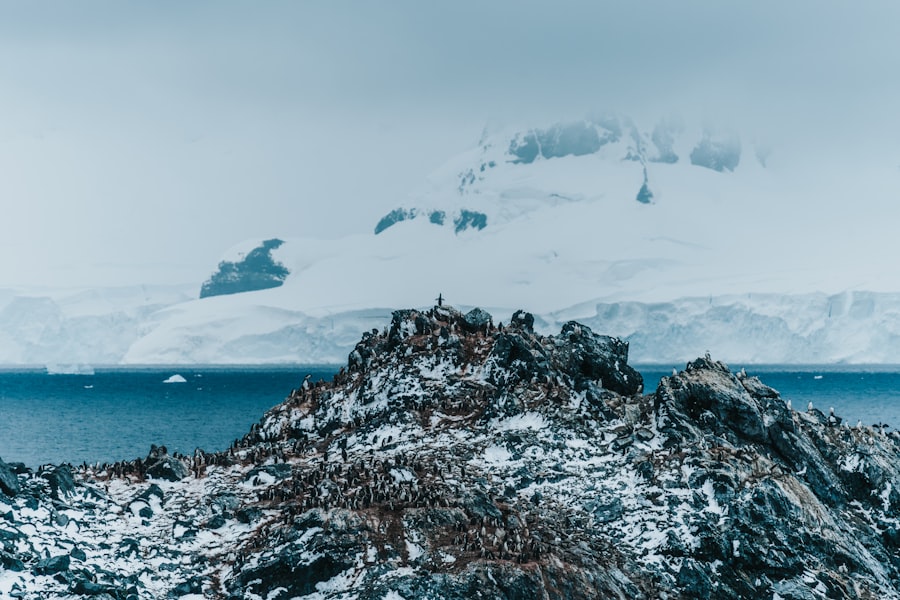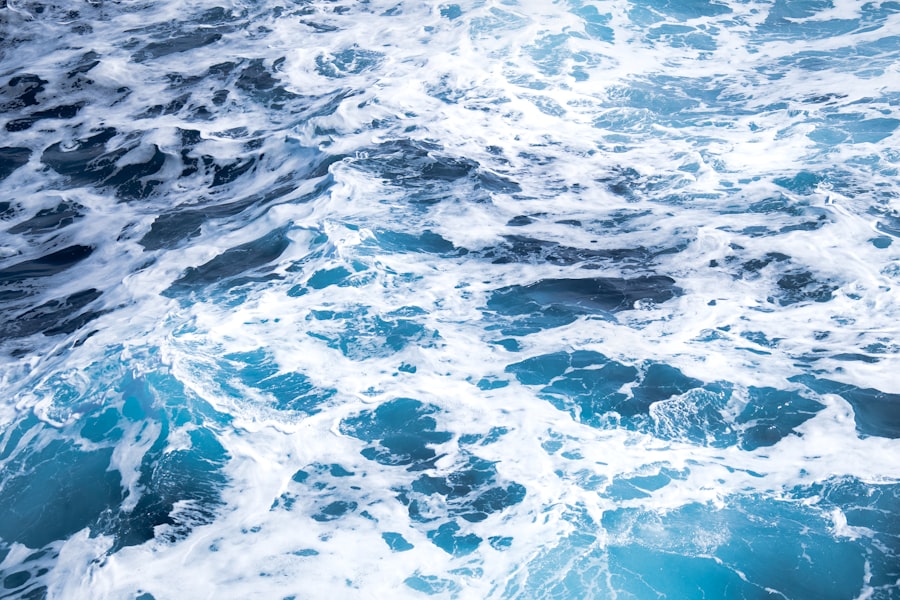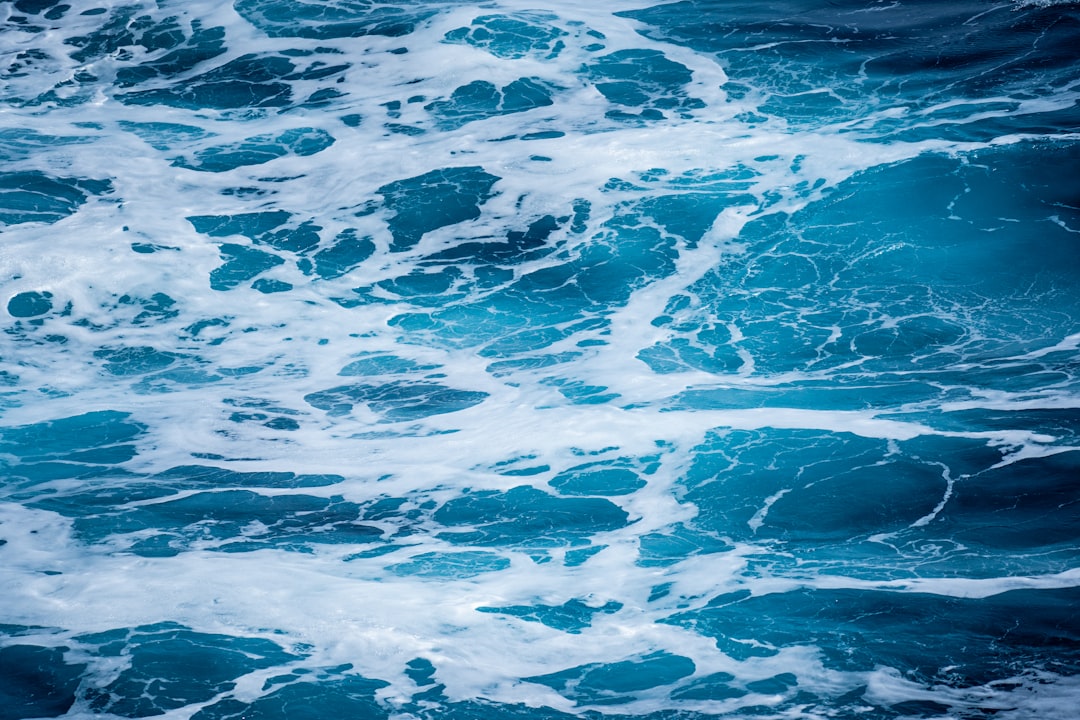The Drake Passage, a body of water that separates South America from Antarctica, is renowned for its tumultuous seas and unpredictable weather. Stretching approximately 600 miles, it serves as a critical maritime route for vessels traveling to and from the Antarctic region. The passage is not only significant for its geographical location but also for its ecological and climatic implications.
It is a place where the Atlantic and Pacific Oceans converge, creating a unique marine environment that has fascinated explorers, scientists, and adventurers alike. Navigating the Drake Passage is often considered a rite of passage for those seeking to explore the Antarctic. The waters are notorious for their rough conditions, which can challenge even the most seasoned sailors.
Despite its reputation, the Drake Passage offers unparalleled opportunities for adventure and discovery. For many, the journey through these waters is not merely a means to an end but an integral part of the expedition experience itself, filled with the promise of breathtaking landscapes and encounters with diverse wildlife.
Key Takeaways
- The Drake Passage is a treacherous body of water located between South America’s Cape Horn and the South Shetland Islands of Antarctica.
- The history of the Drake Passage is filled with tales of exploration, discovery, and the challenges faced by early navigators.
- The weather and climate in the Drake Passage are characterized by strong winds, rough seas, and rapidly changing conditions, making it one of the most challenging maritime environments in the world.
- Navigating the Drake Passage presents numerous challenges, including unpredictable weather, rough seas, and icebergs, making it a daunting prospect for even the most experienced sailors.
- Expedition travelers must take safety precautions such as wearing appropriate clothing, securing personal belongings, and following the instructions of experienced guides to ensure a safe journey through the Drake Passage.
The History of the Drake Passage
The history of the Drake Passage is steeped in exploration and discovery.
Drake’s voyage was significant not only for its exploration but also for its role in establishing trade routes between Europe and the New World.
His journey marked the beginning of a new era in maritime exploration, as it opened up possibilities for further expeditions to the southernmost parts of the globe. Over the centuries, the Drake Passage has witnessed numerous expeditions that have contributed to our understanding of geography and oceanography. Explorers such as James Cook and Ernest Shackleton braved its treacherous waters in search of new lands and scientific knowledge.
Their journeys were fraught with peril, yet they laid the groundwork for future exploration and research in Antarctica. The passage has become a symbol of human resilience and curiosity, representing the relentless pursuit of knowledge in the face of nature’s challenges.
Weather and Climate in the Drake Passage

The weather in the Drake Passage is notoriously volatile, characterized by rapid changes that can occur within minutes. The region experiences strong winds, high waves, and sudden storms, making it one of the most challenging maritime environments in the world. The convergence of cold Antarctic waters with warmer currents from the north creates a dynamic climate that can lead to unpredictable conditions.
Sailors often describe the passage as having a personality of its own, with moods that can shift dramatically. The climate in this region is influenced by various factors, including ocean currents and atmospheric pressure systems. The average temperature can vary significantly depending on the season, with summer months offering relatively milder conditions compared to the harsh winters.
However, even during summer, travelers must be prepared for sudden weather changes that can lead to rough seas. Understanding these climatic patterns is essential for anyone planning to navigate the Drake Passage, as they play a crucial role in determining safe travel windows.
Challenges of Navigating the Drake Passage
| Challenge | Description |
|---|---|
| Strong Winds | The passage is known for its strong westerly winds, often reaching gale force, which can make navigation difficult. |
| Rough Seas | The combination of strong winds and currents can lead to rough seas, causing discomfort for passengers and crew. |
| Narrow Passage | The Drake Passage is a narrow stretch of water between South America’s Cape Horn and the South Shetland Islands, making it challenging to navigate. |
| Icebergs | During certain times of the year, icebergs can pose a threat to navigation in the Drake Passage. |
Navigating the Drake Passage presents numerous challenges that test the skills and resilience of even experienced mariners. The combination of strong currents, high winds, and large swells creates a formidable environment that can lead to dangerous situations. Vessels must be equipped to handle these conditions, as failure to do so can result in capsizing or other catastrophic incidents.
The passage is often described as a “graveyard” for ships due to its treacherous nature. In addition to physical challenges, psychological factors also come into play when traversing these waters. The fear of rough seas can be daunting for many travelers, leading to anxiety and discomfort during the journey.
Crew members must be adept at managing both the vessel and the emotional well-being of passengers. Effective communication and preparation are key components in overcoming these challenges, ensuring that everyone on board feels secure and informed throughout their passage.
Safety Precautions for Expedition Travelers
For those embarking on an expedition through the Drake Passage, safety precautions are paramount. Travelers are advised to undergo thorough briefings before departure, where they learn about potential hazards and emergency procedures. Understanding how to respond to various situations can significantly enhance safety during the journey.
Additionally, wearing appropriate clothing and gear is essential; layers are recommended to accommodate fluctuating temperatures and protect against wind and water. Another critical aspect of safety is ensuring that vessels are well-maintained and equipped with modern navigation technology. Experienced crews familiar with the intricacies of the passage can make informed decisions based on real-time weather data and sea conditions.
Passengers should also be encouraged to communicate openly with crew members about any concerns or discomfort they may experience during the journey. This collaborative approach fosters a sense of community on board and enhances overall safety.
Wildlife in the Drake Passage

The Drake Passage is not only a challenging maritime route but also a vibrant ecosystem teeming with wildlife. The nutrient-rich waters support a diverse array of marine life, including various species of fish, seals, and whales. Among these creatures, one can find majestic humpback whales, orcas, and even blue whales during their migratory patterns.
Birdwatchers will delight in spotting albatrosses and petrels soaring above the waves, their graceful flight a testament to their adaptation to this harsh environment. The presence of such diverse wildlife makes the Drake Passage an attractive destination for eco-tourism and scientific research alike. Observing these animals in their natural habitat provides valuable insights into their behaviors and ecosystems.
Conservation efforts are increasingly important in this region as human activity continues to impact marine life. Understanding the delicate balance of this ecosystem is crucial for ensuring its preservation for future generations.
Famous Expeditions through the Drake Passage
Throughout history, many famous expeditions have traversed the Drake Passage, each contributing to our understanding of exploration and science. One notable figure is Ernest Shackleton, whose ill-fated Endurance expedition in 1914 became legendary due to its harrowing tale of survival against all odds. Shackleton’s journey through these treacherous waters exemplified human determination and resilience in the face of adversity.
Another significant expedition was led by Sir James Clark Ross in the mid-19th century, which aimed to explore Antarctica’s magnetic field. Ross’s voyage not only advanced scientific knowledge but also mapped previously uncharted territories. These expeditions have left an indelible mark on maritime history, inspiring countless adventurers to follow in their footsteps while navigating the unpredictable waters of the Drake Passage.
Tips for Surviving the Drake Passage
Surviving a journey through the Drake Passage requires careful preparation and adaptability.
Engaging in relaxation techniques or focusing on breathing can alleviate feelings of unease when faced with challenging conditions.
Packing wisely is also crucial for survival in this environment. Travelers should bring motion sickness medication if they are prone to seasickness, as well as sturdy footwear and waterproof gear to stay dry during unexpected splashes or rain showers. Staying hydrated and nourished is vital; consuming light meals can help maintain energy levels without overwhelming one’s stomach during rough patches.
The Importance of the Drake Passage for Scientific Research
The Drake Passage plays a pivotal role in scientific research due to its unique geographical position and rich biodiversity. Oceanographers study its currents and temperature variations to better understand global climate patterns and their implications for marine ecosystems worldwide. The passage serves as a natural laboratory where researchers can observe how oceanic processes influence weather systems and climate change.
Additionally, studies conducted in this region contribute significantly to our knowledge of marine biology and conservation efforts. Researchers monitor populations of various species, assessing their health and behaviors in response to environmental changes. This information is vital for developing effective conservation strategies aimed at protecting vulnerable marine life from threats such as overfishing and climate change.
The Future of Expedition Travel in the Drake Passage
As interest in expedition travel continues to grow, the future of navigating the Drake Passage appears promising yet complex. Advances in technology have made it possible for vessels to traverse these waters more safely than ever before. Enhanced navigation systems allow crews to make informed decisions based on real-time data about weather conditions and sea states.
However, with increased tourism comes responsibility; ensuring sustainable practices will be crucial for preserving this fragile ecosystem. Tour operators must prioritize environmental stewardship while providing enriching experiences for travelers. Balancing adventure with conservation will be essential as more people seek to explore this remarkable region.
Overcoming the Fear of Navigating the Drake Passage
Navigating the Drake Passage may evoke fear due to its reputation for rough seas and unpredictable weather; however, it also offers unparalleled opportunities for adventure and discovery. By understanding its history, climate, challenges, wildlife, and significance for scientific research, travelers can approach this journey with confidence rather than trepidation. Preparation is key; equipping oneself with knowledge about safety precautions and survival tips can transform anxiety into excitement.
Embracing the unknown allows adventurers to fully appreciate the beauty and wonder that lies within this remarkable passageway between continents. Ultimately, overcoming fear opens doors to unforgettable experiences that enrich one’s understanding of both nature and humanity’s enduring spirit of exploration.
Navigating the Drake Passage is often described as a daunting experience due to its unpredictable weather and turbulent waters. This treacherous stretch of sea, located between the southern tip of South America and Antarctica, is notorious for its challenging conditions that can test even the most seasoned sailors. For those interested in learning more about the Drake Passage and its formidable reputation, a related article can be found on MyGeoQuest. This article delves into the history and challenges of crossing this infamous body of water. You can read more about it by visiting this page.
WATCH NOW! Drake Passage: Earth’s Deadliest Waters Revealed
FAQs
What is the Drake Passage?
The Drake Passage is the body of water between the southern tip of South America and the northern tip of the Antarctic Peninsula. It connects the Atlantic and Pacific Oceans.
Why is the Drake Passage considered terrifying?
The Drake Passage is known for its notoriously rough and unpredictable seas, strong winds, and challenging weather conditions. It is often referred to as one of the most treacherous stretches of water in the world.
What causes the rough seas in the Drake Passage?
The Drake Passage is located in a region where the westerly winds and the Antarctic Circumpolar Current converge, creating a perfect storm of powerful winds and currents that result in rough seas and challenging sailing conditions.
Are there any safety concerns when crossing the Drake Passage?
Due to the unpredictable nature of the weather and sea conditions in the Drake Passage, there are safety concerns for ships and passengers crossing this stretch of water. It is important for vessels to be well-equipped and for passengers to be prepared for potentially rough sailing conditions.
Are there any benefits to crossing the Drake Passage?
Despite its reputation for being terrifying, the Drake Passage is also known for its rich marine life and unique ecosystems. Many travelers and scientists brave the crossing to experience the diverse wildlife and natural beauty of the region.
